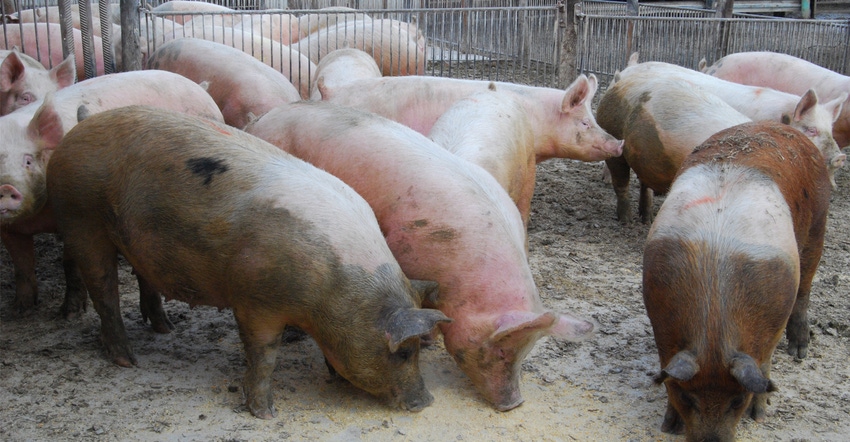June 11, 2020

The Iowa Department of Agriculture has expanded its recently launched disposal assistance program to help pork producers who are forced to euthanize pigs due to COVID-19 supply chain disruptions. The financial assistance is $40 per approved pig. On June 9, the department expanded the program to include farmers who had to euthanize hogs before the payment program began on May 26.
The Iowa Disposal Assistance Program was initially being made available to Iowa producers in three rounds — Round 1, Round 2 and Round 3. Now, as announced June 9, IDAP will also include Round 0, for assistance to be paid to producers for market-ready hogs they depopulated May 1-25.
To qualify for retroactive funding (Round 0), producers must submit their applications to the Iowa Ag Department by June 22. Applicants will be notified of approval by June 24. To qualify for Round 0 funding, producers must have euthanized the animals between May 1 and May 25. Disposal claims must be received by the Iowa Department of Ag by June 29, and proof of proper disposal must be submitted by July 6.
Assistance available for hog farmers
Pork producers can also apply for Round 3 assistance by June 22. Applicants will be notified of approval by June 24. To qualify for Round 3 funding, producers must euthanize animals between June 9 and June 26. Disposal claims must be received by the ag department June 29, and proof of proper disposal must be submitted by July 6.
With losses mounting for hog farmers, the ag department is offering $40 per approved animal to help cover some of the disposal costs for market-ready hogs (hogs weighing at least 225 pounds). Producers must provide documentation, including proof of proper disposal and an affidavit from their herd veterinarian confirming impending welfare issues to receive funding. Each approved applicant may receive funding for up to 30,000 animals per round of the program, depending on the number of applicants.
Due to the coronavirus pandemic, worker shortages at meat processing plants are continuing to cause the facilities to reduce production. Iowa State University economists estimate that as of mid-May, 600,000 pigs in Iowa were unable to be sent to market and were backed up in overcrowded hog barns on farms.
“COVID-19 is causing ongoing disruptions to the food supply chain. Pork producers are going to extraordinary lengths to find solutions, but it’s not enough to make up for the backlog happening on farms,” says Iowa Secretary of Agriculture Mike Naig. “Euthanasia is a very difficult decision for producers to make and is always used as a last resort. The disposal assistance program we are offering is just one way the state is trying to help producers during this challenging time.”
Questions about the Iowa Disposal Assistance Program can be directed to 515-281-5321 or [email protected].
Challenging times for producers
IDAP is funded by a $24 million allocation the state of Iowa received through the $2 trillion U.S. CARES Act. The state disposal assistance program will help, but it’s not likely to cover the entire cost of disposal, says Brett Ramirez, an Iowa State University ag engineer. He estimates the cost to euthanize and dispose of a market-ready hog is between $50 and $100 per head, depending on the process used.
Along with the cost issues surrounding hog disposal, hog producers are also suffering from lower hog prices caused by COVID-19 disrupting the marketing supply chain. ISU livestock economist Lee Schulz estimates the cost per head to finish a 270-pound hog in Iowa this year has ranged from $132 to $136 for many producers. In April, producers saw a steep dip in hog prices, dropping about 18% from March. At this price, producers who were able to get their hogs to market lost on average more than $32 per head.
USDA is offering hog producers some assistance through the Coronavirus Food Assistance Program. CFAP is providing producers who sold hogs during the January to April window a one-time payment of $18 per head to help offset the market fluctuation. That works out to a little more than one-half the per-head loss for many producers.
About the Author(s)
You May Also Like






